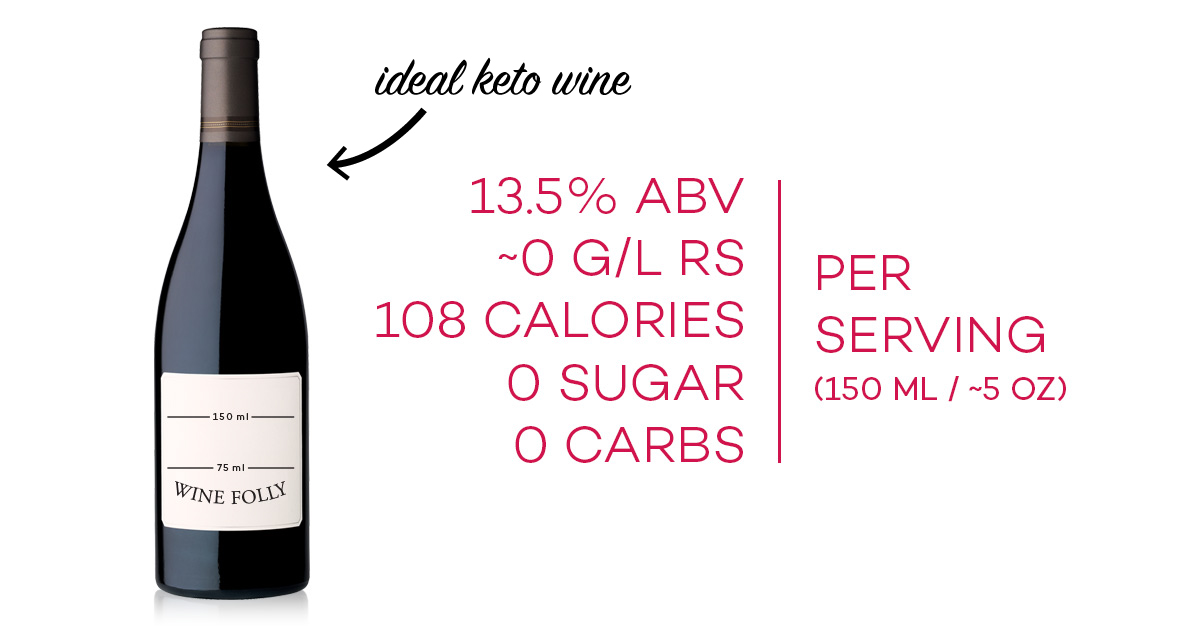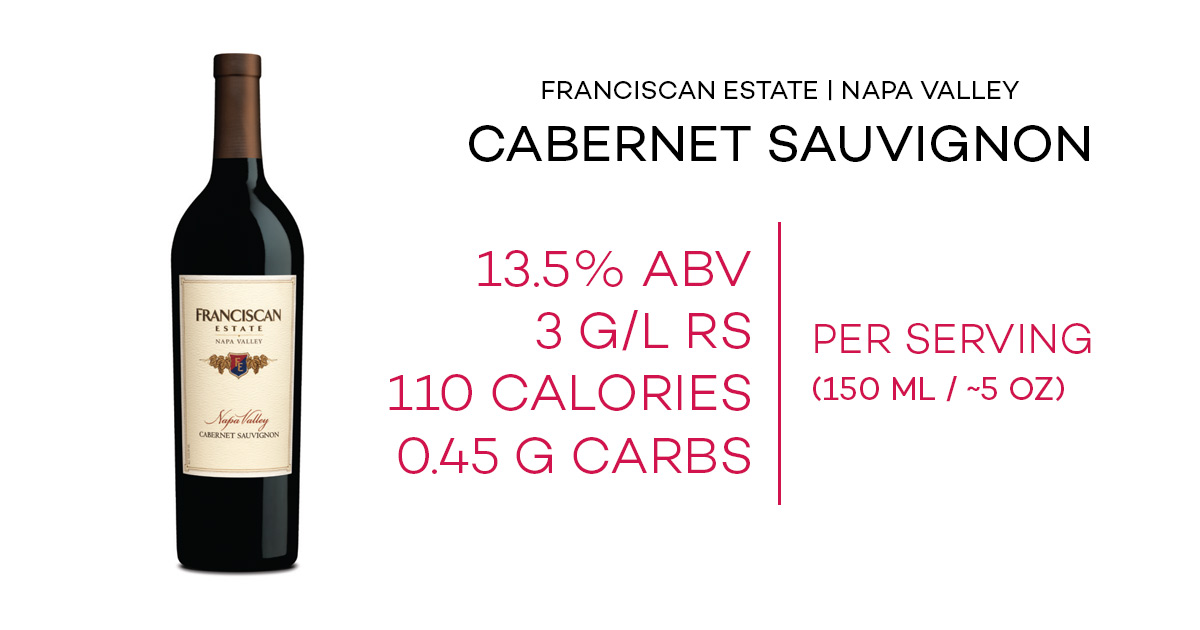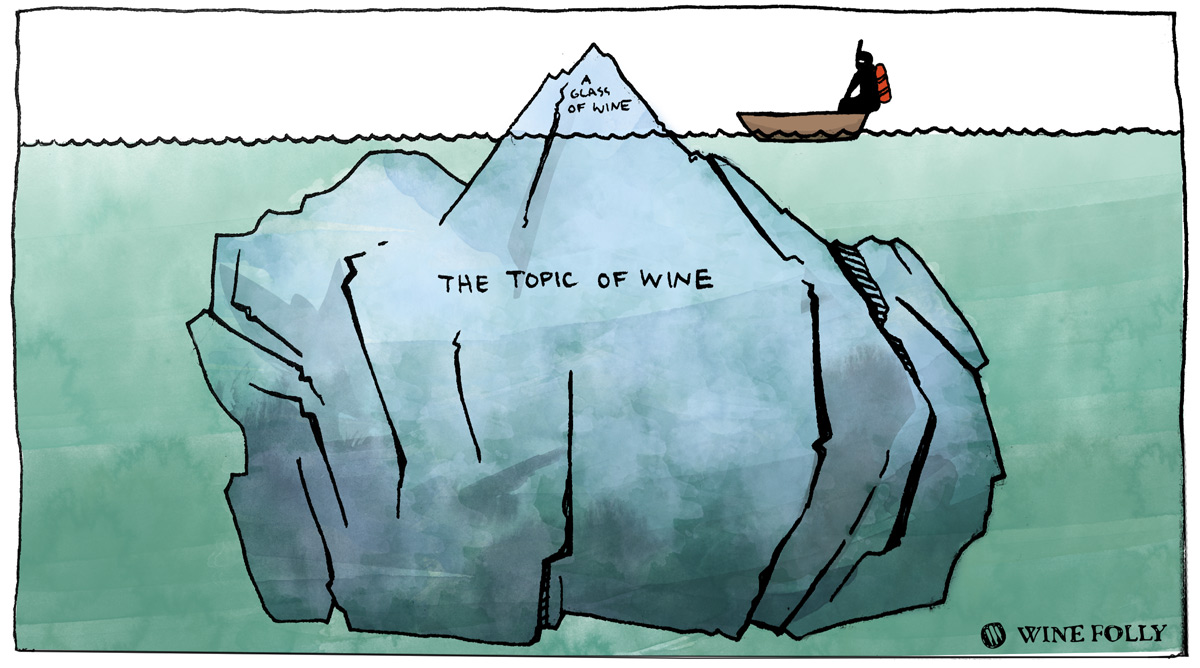Let’s talk keto wines and whether or not we can drink on a diet.
Many wines have little to no carbohydrates. This is good news because carbs are the nemesis of the ketosis diet.
It’s important to note, however, that not all wines are keto-friendly. Let’s figure out which wines to buy and which ones to avoid when following a ketosis-driven diet. Plus, how much should you really be drinking on a diet anyway?
What Are The Best Keto Wines?
Ideally, a keto wine should have low alcohol (13.5% ABV or less) and little to no residual sugar.
This scenario is a dry wine with 108 calories (from alcohol) and 0 carbs per 150 ml (~5 oz) serving. Not bad!
Why It’s Hard to Find a 100% Dry Wine
Recommended wines for keto are Merlot, Cabernet Sauvignon, and Chardonnay (among others.) That said, many aren’t 100% dry.
Many wines contain residual sugar.
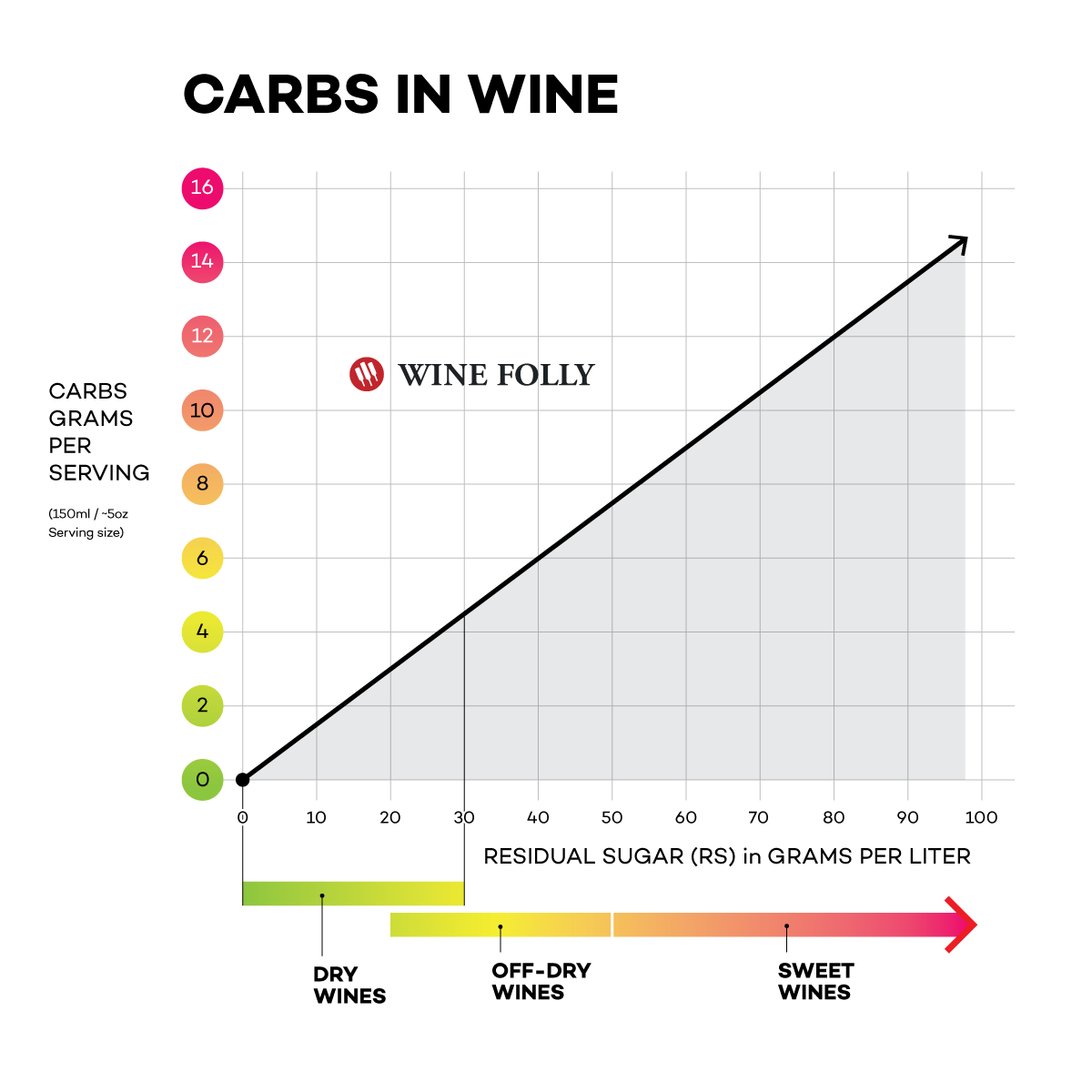
What The Heck is Residual Sugar?
To answer this question, here’s a refresher course on how wine is made.
Before grapes ferment into wine, they are sugary. Little yeasts, including Saccharomyces cerevisiae, gobble up grape sugar and produce alcohol. Sometimes though, the winemaker stops the yeast from eating all the sugar.
You might wonder,
“Why would they do such a thing?!”
As it happens, leaving some residual sugar in dry wine can increase the “likeability factor.” Many wines marketed as “dry” have anywhere from 0–30 grams per liter of residual sugar. Surprisingly, they taste dry.
Here are a few examples:
Franciscan Estate | Napa Valley Cabernet Sauvignon | 2014
This wine has 109 calories and 0.45g of carbs per 150ml/~5 oz serving.
Cupcake Vineyards | 2016 California Chardonnay
This wine has 112 calories and 0.9g of carbs per 150ml/~5 oz serving.
Dr. Loosen | Mosel Valley “Ürziger Würzgarten” Dry Riesling | 2016
This wine has 105 calories and 1g of carbs per 150ml/~5 oz serving.
Tsantali | Naoussa Greece Xinomavro | 2016
This wine has 99 calories and 0.28g of carbs per 150ml/~5 oz serving.
What We Learned On Our Hunt for Keto Wines
Bad News: you’re not going to see RS listed on the label.
The US has no labeling requirements for nutrition, so no one adds it. Additionally, we found searching for this information online complicated.
It took me multiple back-and-forth emails to squeeze this information out of one producer. (Their wine had 32 g/L RS – perhaps this was why?)
Good News: Many wines will fit the bill! On our searches, we discovered a few key clues:
- Value-driven dry wines tend to have more residual sugar to improve the taste. We’ve seen value wines range from about 5–30 g/L of residual sugar.
- Generally speaking, white and rosé wines often feature some level of residual sugar. Sweetness in white and rosé wines helps counterbalance acidity. So, to be safe, you can anticipate 10 g/L or 1.5 g carbs per serving.
- European wines (France, Italy, Greece, etc.) tend to prioritize dryness. So you might try more Nebbiolo, Bordeaux, Chianti, Rioja, or even that compelling Xinomavro listed above!
- Sparkling wines marked with “Brut,” “Extra Brut,” or “Brut Nature” typically have the lowest amounts of residual sugar. Expect 1.5g carbs per glass or less. Here’s a fun article about Champagne sweetness levels for more information.
- Use search terms like “fact sheet,” “tech sheet,” “rs,” or even “pH” to search for a specific wine’s technical information quickly.
What Wines To Avoid
Wines with higher alcohol levels include varieties like Shiraz, Pinotage, Zinfandel, and Grenache. You can’t blame them for it. They’re naturally high in sugar.
What’s more important to avoid is wines with higher sweetness levels (anything above 30 g/L RS or 4.5g carbs). Sweet wines include Moscato, Port, and other dessert wines.
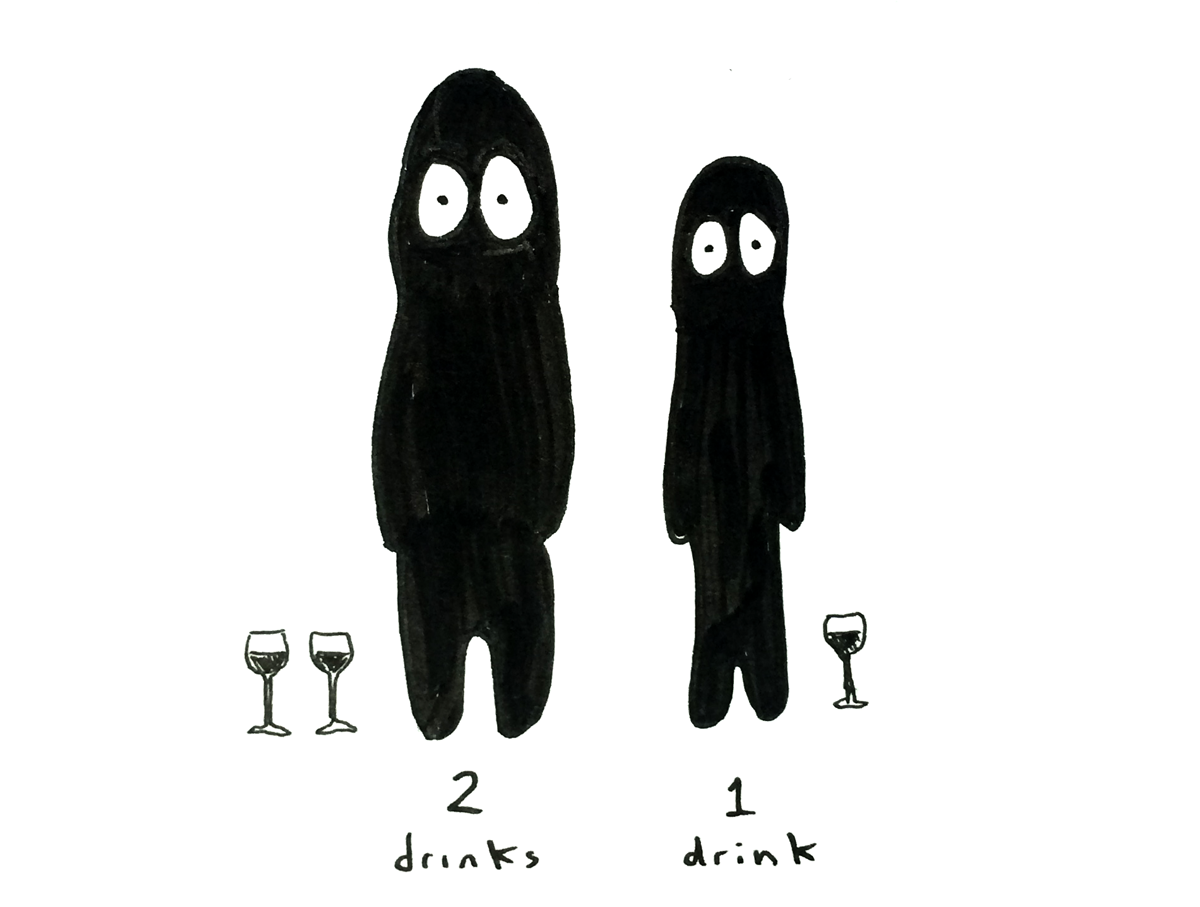
How Much Should We Drink on Keto?
Most short-term, in-depth keto diets do not recommend drinking alcohol at all.
That said, if you’re working on a longer-term nutrition lifestyle change, your best bet is likely the moderation model:
- No more than 2 drinks per day for men*
- No more than 1 drink per day for women*
The funny thing about alcohol is that we digest it very differently than other calories. Part of the effort happens with these handy little enzymes called alcohol dehydrogenase. Enzymes help chemically process alcohol calories through our liver, stomach, and kidneys. So, we’re still not sure if we burn alcohol calories as efficiently as other calories.
In case you’re wondering: The reason why women can’t drink as much is because women have less alcohol-digesting enzymes than men. It’s a shame, but also a fact.
*As we all well know, everyone’s physiology is different and some lineages ought to moderate more! Talk to a doctor or nutritionist about your unique situation.
Last Word: Drink Wine… Even If It’s Folly
If you’re seriously committing to the keto thing, you might want to stop drinking altogether while your body adjusts. After this process, you might be able to start adding dry wines back into your diet.
What’s life without living a little?
After taking a deep dive into the keto diet and learning from others, we did notice a trend: the people who stick to a diet and exercise regime are the ones who get results. So, if we learned anything from this whole process, it’s that doing the work will get you the results you want.
You can do it. Salut!
Do The Math Yourself
Carbs: Take residual sugar level in grams per liter (g/L) x 0.15 = grams of carbs per 150 ml serving.
Calories:
For alcohol calories, take ethanol calories per milliliter (5.37) x serving size (150 ml) x alcohol by volume (0.135 or 13.5%) = 108 calories per 150 ml serving.
For sugar calories, take sugar carbs per serving x 4 (there are 4 calories per gram of sugar)
alcohol calories + sugar calories = total calories per serving.
Alcohol calories math:
There are 7.1 calories per gram of pure ethanol
Convert grams to ounces by a multiplier of 28.3495
Factor in the density of ethanol at 0.789 g/cm3
Calculation: 7.1 x 28.3495 x 0.789 = 158.81 calories per ounce (oz) of pure ethanol or 5.37 calories per milliliter (ml)

